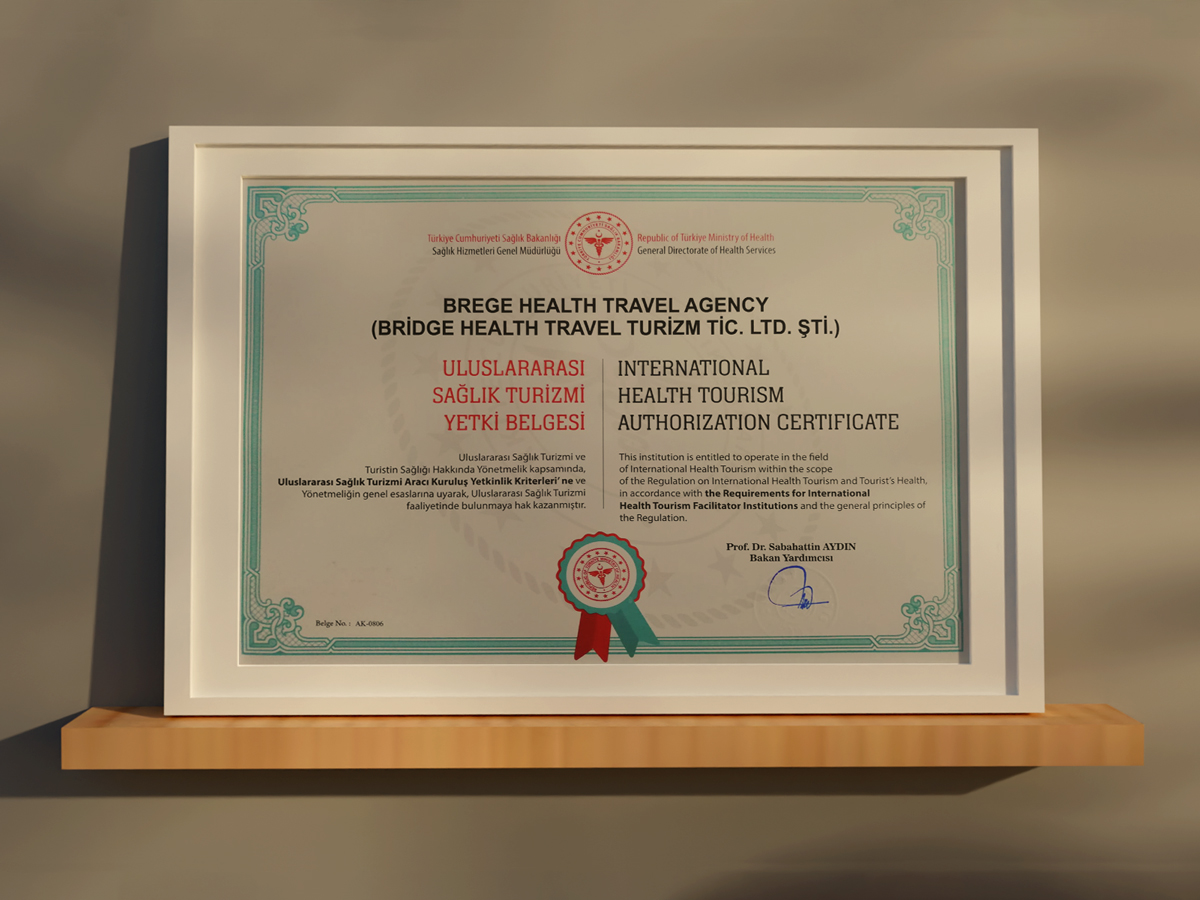What should I do for gastric balloon treatment in Turkey?
Calculate Your Cost / Price
Pain and nausea affect about one-third of people soon after insertion of an intragastric balloon.
How do I go for gastric balloon treatment in Turkey?
Which hospital is best for gastric balloon in Turkey?
-
How to prepare for gastric balloon?
Before insertion of the gastric balloon, you must fast from food and drinks for 12 hours. When the gastric balloon is to be removed, you must start on a fluid-only diet 48 hours beforehand. This means no solid food at all.
-
How do you qualify for gastric balloon?
Patients may be eligible for a gastric balloon if they have a BMI between 30 and 40, and they haven't been able to lose weight and keep it off with other weight-loss plans.
-
What to expect when you get a gastric balloon?
Pain and nausea affect about one-third of people soon after insertion of an intragastric balloon. However, these symptoms usually only last for a few days after balloon placement. Although rare, serious side effects may occur after intragastric balloon placement.
-
What do I eat in a day with a gastric balloon?
Continue to eat 3 regular meals each day and try not to leave more than 3-4 hours between meals.
EAT FIRST -Protein (meat, fish, poultry, eggs, beans, pulses)
EAT SECOND- Vegetables and salad.
EAT LAST - Carbohydrates (bread, rice, potato, pasta, grains)
-
How to sleep with a gastric balloon?
Once you have passed the initial few weeks following the gastric balloon procedure, you should be able to sleep normally. This means you can sleep on your back or on your side. Sleeping in these positions allows your body's natural digestive processes to function while you rest.
-
Can you eat bread with a gastric balloon?
Avoid anything doughy such as bread or chapattis as these can stick to the balloon. You can gradually start to include the 'caution foods'. Continue to drink between meals only and avoid sugary or fizzy drinks as before. Still aim for about 2 litres (3½ pints) each day.
-
How quickly do you lose weight with gastric balloon?
Losing Weight with a Gastric Balloon
You are likely to lose weight quickly, especially in the first three to four months of living with the gastric balloon. Typically, people lose about 10 to 15% of their body weight by the time the six-month program is complete.
-
Can you drink coffee with a gastric balloon?
This includes any fluid such as water, juices, milk, squash and soups. Tea and coffee are also allowed though should not be your main source of fluids. You should avoid drinks with too much gas. Fizzy drinks can cause a great deal of discomfort with a gastric balloon.
-
Can I fly with a gastric balloon?
Yes. Flying with a gastric balloon is perfectly fine. It will not burst or rupture on a commercial flight. Once you've recovered from the initial symptoms of having a placement you will be able to fly and enjoy your holiday as normal.
-
How long do you feel sick after gastric balloon?
Nausea and vomiting are very common in the first seven to ten days after gastric balloon insertion and this is simply because your stomach isn't used to having it there.
-
Is gastric balloon a good idea?
The gastric balloon procedure may be particularly useful for people considered too overweight to undergo vital surgery. The use of the balloon to successfully reduce weight prior to surgery can also help to reduce the risks associated with surgical procedures on overweight patients.
-
What happens if the gastric balloon pops?
Bowel obstruction and perforation are the most significant concerns if your balloon bursts. Symptoms such as severe abdominal pain, vomiting, or difficulty swallowing should never be ignored, as they may indicate a burst balloon.
-
Do you feel hungry after gastric balloon?
Approximately 90% of people have no appetite at all after the insertion of an intragastric balloon. In the first 10 days you will be restricted to a liquid diet, but most people do not feel hungry!
-
Who cannot have a gastric balloon?
Who is not a candidate for gastric balloon? Gastric balloon is not qualified to pregnant women, long-term cortisone users, those who are undergoing cancer treatment or those who have recently had cancer treatment.
-
How painful is a gastric balloon?
About one-third of patients have pain, nausea or discomfort in the first few days. Over-the-counter pain medication usually helps. Weight loss: You may not feel hungry the first couple of weeks, leading to rapid weight loss.
-
Can your body reject a gastric balloon?
It is important to remember that a BIB gastric balloon is a foreign object, meaning your body will attempt to reject it.
-
What is the age limit for gastric balloon?
To be eligible for gastric balloon, you must: Be at least 13 years old. Have a body mass index (BMI) ≥30 and ≤40 kg/m2. Have tried other weight-loss programs, such as a supervised diet or exercise regimen.

Gastric Balloon Treatment Antalya, Gastric Balloon Treatment Turkey, Gastric Balloon Procedure All Inclusive in Turkey, Aesthetic Travel Antalya, Gastric Sleeve Travel Antalya, Gastric Balloon Travel Antalya, Gastric Bypass Travel Antalya, Aesthetic Travel Turkey, Gastric Sleeve Travel Turkey, Gastric Balloon Travel Turkey, Gastric Bypass Travel Turkey, Gastric Sleeve in Antalya, Gastric Balloon in Antalya, Gastric Sleeve in Turkey, Gastric Balloon in Turkey, Obesity Travel Antalya, Obesity Travel Turkey, Gastric Sleeve Antalya, Bariatric Antalya, Gastric Bypass Antalya, Mini Gastric Bypass Antalya, Gastric Balloon Antalya, Gastric Sleeve Price Turkey, 2024 Gastric Sleeve Price Antalya, 2024 Gastric Sleeve Price Turkey, 2024 Mini Gastric Bypass Price Turkey, 2024 Gastric Balloon Price Turkey, 2024 Mini Gastric Bypass Price Antalya, 2024 Gastric Balloon Price Antalya
FQ About Gastric Balloon Clinic in Antalya / Turkey
Pizza and pasta are normally favorites, but after bariatric surgery, they should be consumed in moderation. If you are having pizza, order a thin crust and add veggies and lean meats, such as chicken or Canadian bacon. Overall, you should choose a menu item that is centered on protein, like grilled chicken or seafood Longer term risks and complications of gastric bypass can include: Bowel obstruction. Dumping syndrome, causing diarrhea, nausea or vomiting Weight loss before surgery was associated with readmission... +More
A full-body lift involves making multiple incisions around different target areas of the body. These incisions can be minor or severe and differ for each patient, depending on the amount and location of fat on their body. This makes the full-body lift an extremely personalized cosmetic surgery.Targeting a particular area, the surgeon makes an incision, exposing the underlying tissue and muscles. The extra fat, skin, and tissue are removed, followed by tightening of the muscles. The remaining skin is repositioned... +More
In medical terms, GI stands for Gastrointestinal, referring to the digestive system, which includes the stomach, intestines, and other associated organs. GI disorders encompass a wide range of conditions that affect digestion, including gastritis, irritable bowel syndrome (IBS), and gastrointestinal cancers.
A pre-surgery diet prepares the body for bariatric surgery, typically focusing on reducing liver size and overall fat to make the procedure safer. This high-protein, low-carbohydrate diet often lasts for 1-2 weeks before surgery. Patients must follow a strict plan of liquids and protein shakes to shrink the liver and facilitate surgery.
WLS (Weight Loss Surgery) Sleeve Surgery refers to sleeve gastrectomy, a popular bariatric procedure. It is effective for individuals who need to lose a significant amount of weight but prefer a less invasive option than gastric bypass. The surgery reduces the size of the stomach and promotes weight loss by restricting food intake.
Guava. Guava is one of the most protein-rich fruits around. You'll get a whopping 4.2 grams of the stuff in every cup. This tropical fruit is also high in vitamin C and fiber
The Allurion Balloon is not yet widely available on the NHS, though some private clinics in the UK offer it. This non-invasive procedure is an attractive option for individuals seeking a temporary weight-loss solution without the risks associated with surgery.
A bariatric doctor specializes in weight-loss surgery and obesity management. These specialists perform procedures such as gastric bypass, sleeve gastrectomy, and lap band surgery. To find a qualified bariatric doctor near you, consult your healthcare provider or search for local bariatric clinics.
Turkey has become a top destination for individuals seeking bariatric surgery and other weight-loss treatments. Weight loss centers in Turkey offer a variety of procedures, including gastric sleeve, gastric bypass, and non-surgical methods like intragastric balloons. These centers attract patients from around the world due to the combination of advanced medical technology, skilled surgeons, and lower costs compared to Western countries.
After lap band surgery, patients must follow a specific diet to maximize the success of the procedure and avoid complications. Immediately post-surgery, a liquid diet is followed by a progression to soft foods and, eventually, solid foods. The diet must be high in protein and low in sugar, with small, frequent meals to avoid overfilling the stomach pouch created by the band.
In the UK, gastric sleeve surgery is available through the National Health Service (NHS) for patients who meet specific criteria, such as having a Body Mass Index (BMI) over 40 or over 35 with obesity-related health conditions. Private options are also available, and the cost typically ranges from £8,000 to £12,000.
Pages
-
£ 1580£ 1450GASTRIC BALLOON PROCEDURE PACKAGE
Give a call to learn more about what’s included and to come up with a tailored plan if you need unique accommodations that are not listed below.
- Airport
- Hotel
- Hospital transfer
- The balloon is placed via endoscopy, the procedure takes 15-20 minutes and you are discharged after 2-3 hours. It is enough to stay here for 1 night.
- Blood samples & x-rays
- 5 year follow up
-
£ 2750£ 2550GASTRIC SLEEVE PACKAGE
GASTRIC SLEEVE PACKAGE COST TURKEY / ANTALYA
Give a call to learn more about what’s included and to come up with a tailored plan if you need unique accommodations that are not listed below.- Airport
- Hotel
- Hospital transfer
- 4 day stay at hospital
- Blood samples & x-rays
- 5 year follow up
-
£ 3100£ 2900MINI GASTRIC BYPASS PACKAGE
MINI GASTRIC BYPASS PACKAGE TURKEY
Give a call to learn more about what’s included and to come up with a tailored plan if you need unique accommodations that are not listed below.- Airport
- Hotel
- Hospital transfer
- 4 day stay at hospital
- Blood samples & x-rays
- 5 year follow up












